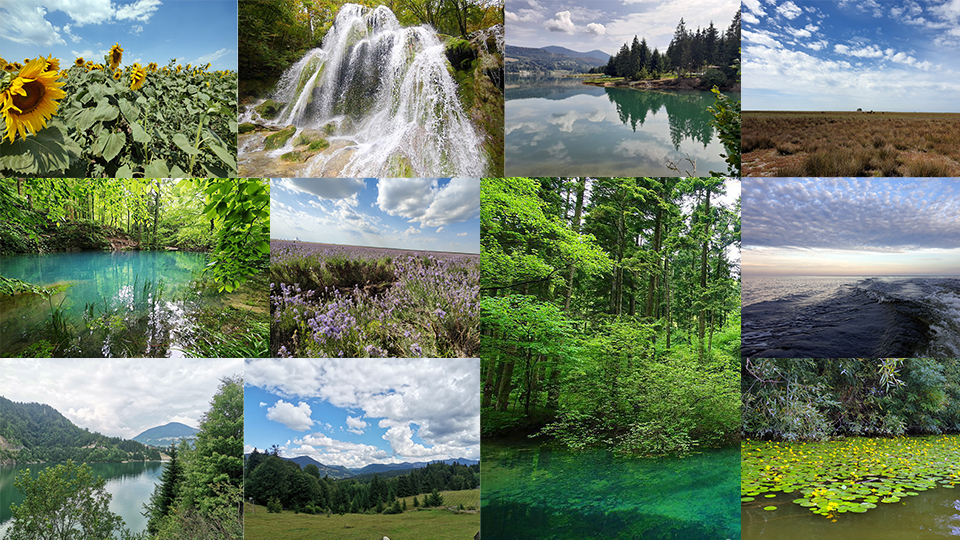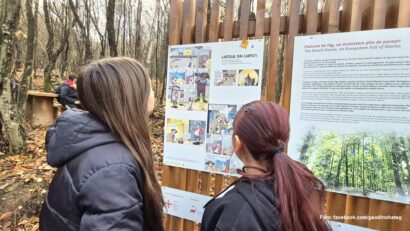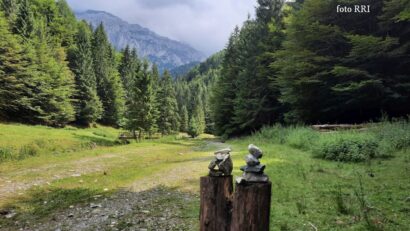Climate change impacts Romania
Global warming has in recent years become more and more visible in Romania just like in any other country

Eugen Coroianu, 27.01.2023, 14:00
2022 was the
third warmest year in recorded history, with an average temperature of 11.7
degrees Celsius and a 1.55-degree difference against the average temperature measured
between 1981 and 2010, a survey of the National Meteorological Administration
shows.
The warmest five years between 1900 and 2022
were: 2019, 2020, 2022, 2015 and 2007, and the period between 2012 and 2022 proved
to be the warmest 11 years in a row, which confirms the tendency of weather
warming in Romania as well.
Furthermore, this year saw the warmest
January day in recorded history when 22.5 degrees Celsius were reported in
southern Romania.
So, statistics prove what we all
have seen for many years now that climate change affects the entire planet. And
we can no longer speak about a local or national problem says Environment
Minister, Barna Tanczos. This opinion is also shared by climatologist Roxana
Bojariu, who in the following minutes will be explaining how Romania’s weather
has changed in the past two decades.
Roxana
Bojariu: It didn’t happen all of a sudden, you know.
We have witnessed the global warming for quite some time now, but the problem
is that this is an accelerating process. It has been doing so in the past years
but unfortunately the process continues and is getting worse as more greenhouse
gases are accumulating in the atmosphere. We are feeling this here in Romania
as well. And even if we had warm winters and periods with temperatures higher
than usual before, the weather this year was very strange for the cold season
and that was not only in Romania but in the entire Europe. So, if we draw the
line and compare the temperatures in the northern hemisphere, we’ll clearly see
they are higher than usual, which confirms the idea of accelerated climate
change. And this isn’t visible only in winter. If you remember last summer
proved to be the hottest in Europe in recorded history and the drought
affecting the continent was the severest in the past 500 years.
Last year’s drought also affected Romania but
the Environment Ministry has given assurances they have resources to fight
climate change. According to him, the section Forests and Biodiversity
Protection, part of the National Plan of Recovery and Resilience, includes a
total budget of roughly 1.2 billion euros, which can be used to increase the
surface of forests. Barna Tanczos has underlined that forests are the most
resilient when it comes to climate change effects. He recalled that the
National Forestry Strategy was endorsed last autumn with a view to setting
mandatory norms on afforestation and reforestation as well as on forests and
forested surfaces located in areas that are vulnerable to climate change.
At the same time, owners of forests
and plots of land are being given incentives to preserve and capitalize on the
true potential of these surfaces. They will benefit from 456 Euros per year per
hectare for 20 years, in order to turn these areas into real forests. The
forestry carbon reward is a measure through which we stimulate the
transformation of as many plots of land as possible into future forests,
Minister Tanczos explains. Roxana Bojariu tells us more about the future of the
climate change and what we should expect next.
Roxana
Bojariu: The weather is not going to remain like that of course and even in the
optimistic scenario when we have succeeded in limiting the rise of the global
temperature to 1.5 Celsius under the Paris Agreement, we are still going to see
higher temperatures. However, they will not be as high as in the worst case
scenarios, where we haven’t managed to impose a limit. And this means not only
a uniform warming in space and time but also extreme phenomena like those we
have already witnessed. Suchlike phenomena will be affecting Romania as well, and
the situation will worsen with the growing greenhouse gas emissions. Every
tenth degree in the global average translates into hotter heatwaves and Romania
will be in for more intense, more frequent and more persistent heatwaves. These
will also cause wildfires although not like those affecting the Mediterranean
countries, Greece, southern France or Portugal.
The statistics of the meteorological
alerts between 2017 and 2022 in Romania highlight the intensity, frequency and wider
area covered by the dangerous phenomena with an impact over the social-economic
activity. In 2022 alone, 130 weather alerts were issued, out of which five were
Code Red. Roughly three thousand Nowcasting alerts were issued out of which 95 Code
Red. At the same time, the 2021-2022 drought was a longer one, which
intensified from one month to the other and eventually affected almost all the
country’s agricultural regions.






























